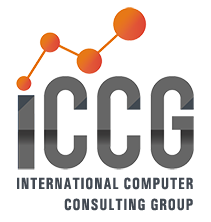This is Part 2 in a 3-Part series on facing the competition.
How do you fend off competitive threats?
With threats popping up from emerging players as well as mature contenders, maintaining market share in manufacturing industries can be difficult. You must be vigilant and ready to respond. Just as technology helps the new contenders step up their game, it also can help you identify early warning signs of eroding market penetration. Fortunately, there are also corresponding tactics you can deploy to boost your competitive edge.
Red ten warning signs the competition is making gains...

1. Changes in social traffic. In previous decades, a manager would watch newspapers or magazines to see what kinds of new features the competition was highlighting. Today, monitoring social media is the way to capture the pulse of activity in the market—what the competition is doing and how consumers are responding. Any changes in social traffic, from volume fluctuation to new topics, should be noted and watched. Tools can help you track impressions, positive/negative comments about your brand, and how your products fare in polls, evaluation sties, and rankings.
2. Left out? Not only do you need to monitor social traffic that mentions your brand name, you must be aware of conversations from which you are entirely excluded. This may mean you have missed an opportunity completely and the market is moving in a direction where you aren’t currently viewed as a viable contender. Modern marketing solutions can help you manage your social presence, turning this art form into a science, based on facts, not hunches.
3. Changes in bids, quotes, early-stage inquiries. In the past you have may have relied on sales people to create forecasts and predict future sales trends. Or, you may have tracked the number of RFPs as an indicator of sales in the pipeline. Today, you need more precision. An often-quoted statistic says that even in complex B2B purchase decisions, buyers conduct up to 60% of their purchase research before they speak to a sales person. They do research online and by talking to colleagues. Tracking KPIs for downloads from your website or visits to your online content library may be better indications of product interest. Identifying early stage activity of potential buyers is key to sensing competitive change—when there is still time to take proactive action.
4. Influencers. Understanding the role of influencers and industry advisors will be an important part of watching the rear-view mirror. Alliance potentials abound for creative sharing of product advice and recommendations from experts. Your E-commerce solutions as well as portals for customers and partners, need to be robust sites which can help fulfill the prospects need for information and unbiased recommendations.
5. Are customers asking for products you don’t offer? Changes in customer expectations can happen overnight and be a startling surprise to the company that isn’t closely aligned with the market. If customers or prospects start asking for offerings that aren’t in your product line-up, you can be confident that someone will be filling the need. Nimble start-ups can move into that space quickly, setting up to produce the products, foods or goods—just as the customer wants. With cloud-based solutions you can be as agile as a start-up. Cloud solutions allow companies to quickly set up new branches, start new divisions, or merge with partners. You can respond to the new trend or new market demand before the competitor gets its footing and claims market share.
6. Changes in availability of raw resources. Any conspicuous market shift should be monitored, particularly if the shift relates to availability of ingredients or raw resources necessary to your product. If you are the top producer of tropical flavored ice-cream and your buyer notices a sudden shortage of mango extract flavoring among your premiere suppliers, what could be the cause? Has a new competitor appeared? Is a competitor planning to corner the market on mango treats? Perhaps a large-scale promotion or inside knowledge about a trend? Such “blips” on the radar may seem inconsequential, but in global commerce, small blips become magnified to millions of dollars at stake
7. Billing fluctuation. Changes in your billing cycle may seem like obvious signs that a competitor is siphoning business away from you. But, it isn’t always so simple. Many reasons can be the cause for fluctuations in billings. Yes, an aggressive competitor may be one. Or, perhaps customers are choosing to repair vs. replace equipment or are holding off purchase decisions waiting for a new product release or promotional offer. Perhaps the fluctuation is only a natural seasonal dip, and nothing to be alarmed about.
8. Stepping on your own toes. There may be times when your own activity, such as releasing a new product which cannibalizes sales from an existing one, is the culprit. Changes in sales territories, financing options, and policies on outstanding accounts can all impact billing. Understanding billing influences and customer habits is essential today. Advanced BI solutions help you analyze activity and separate warning signs from normal ebbs. Without modern reporting and analysis tools–which are easy to use–managers may be relying on hunches and anecdotal suppositions to rationalize changes in sales—until it is too late.
9. Changes in customer feedback. Listing to your customer is an essential part of retaining your competitive edge. You must know what your customers think of your products, brand, and service—at all times. An annual survey is not likely to provide you with the level of insight you need to stay aligned with customers and prospects who tend to have short-term priorities and little brand loyalty.
10. How’s the experience? Even manufacturers selling into the B2B space must be aware that buyers are continually looking for greater value, enhanced service, and an outstanding customer experience. The customer experience can take many forms, from ease of placing orders to the ability to customize products. Communication with customers—at multiple stages in the buying cycle—is important. Customer Relationship Management (CRM) solutions will help you manage the customer’s buying experience and enhance engagement. Field Service solutions can help you manage the call center, aftermarket service and features like extended warranties and service agreements.
Customer relationships offer the best defense
Enhancing your customer relationships is one of the best ways to align with customers—a preventative step to keep them from even consider turning to competitors. Outstanding service and trust relationships are hard for start-up competitors to match and nearly impossible for low-cost competitors to offer. This offensive tactic may be your best defense against threats from competitors. Final reiteration of advice includes: Be alert to industry trends, be agile, innovative and responsive. Check in with your customers often, listen to warning signs, and be exceptional. If you offer your customers everything they need, why would they go elsewhere?
Check back for Part 3 and learn how to create a competitive edge through service.
Have questions? Reach out to ICCG for a complimentary consultation.

